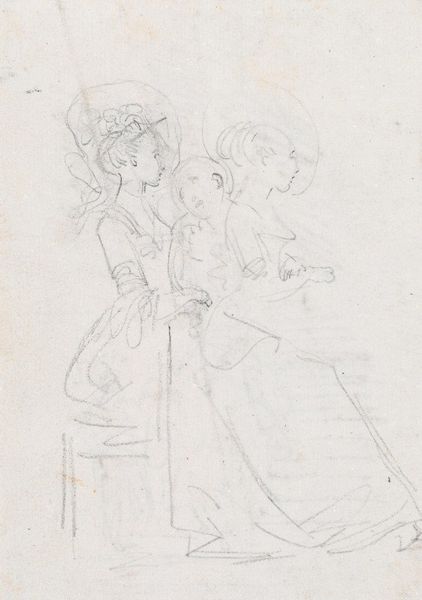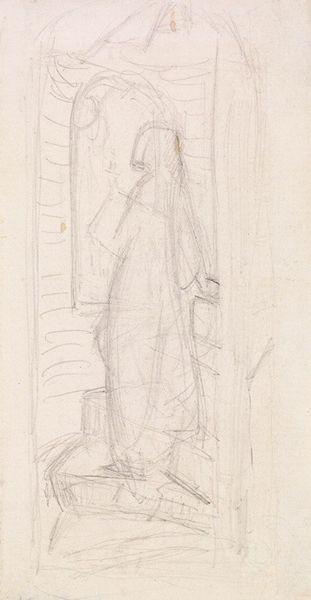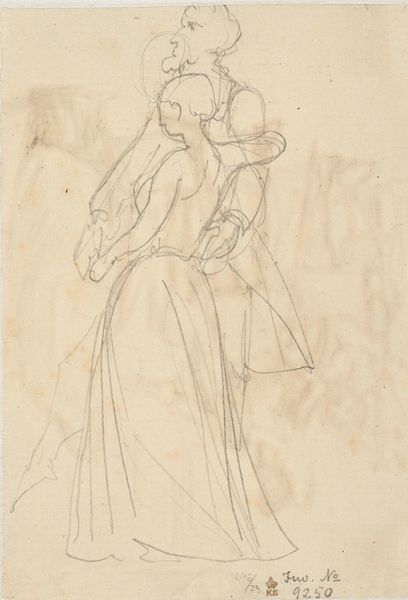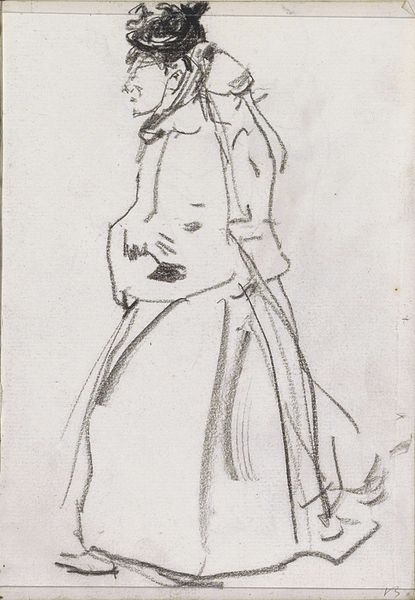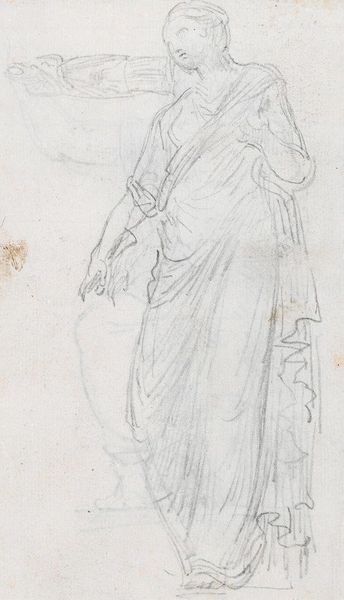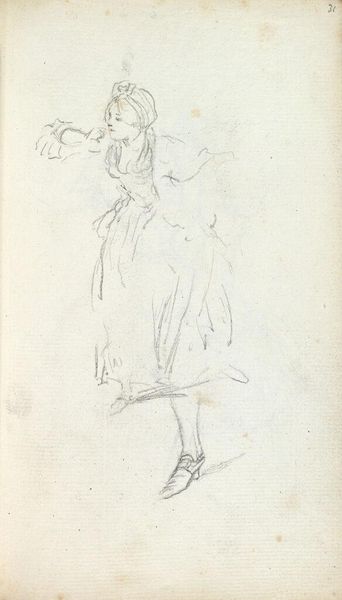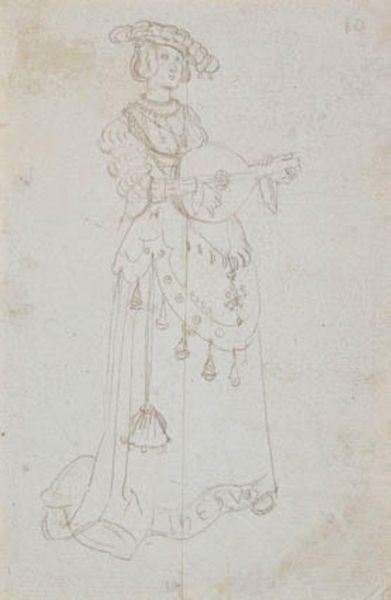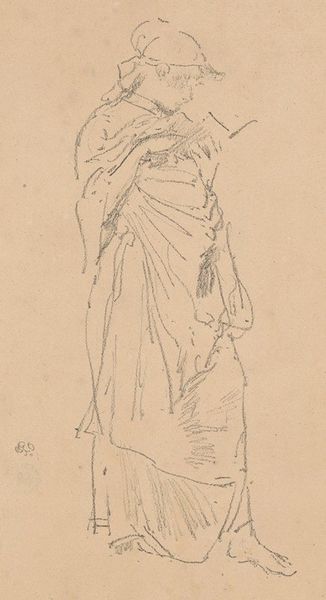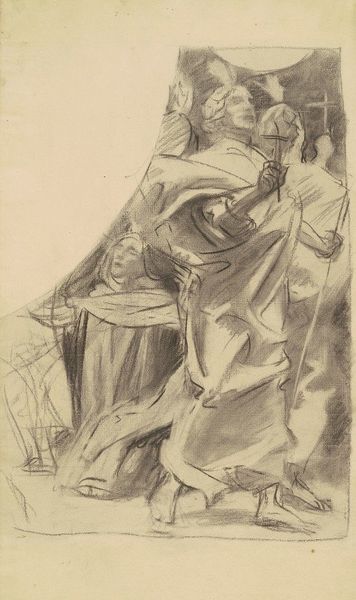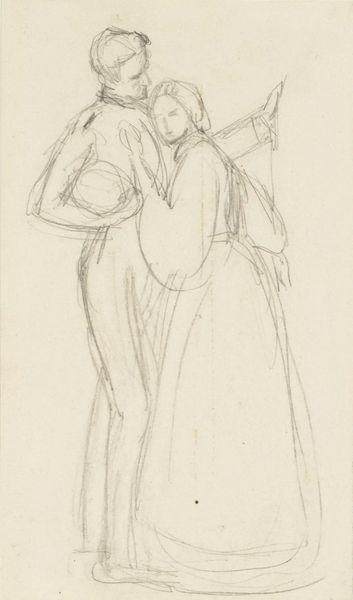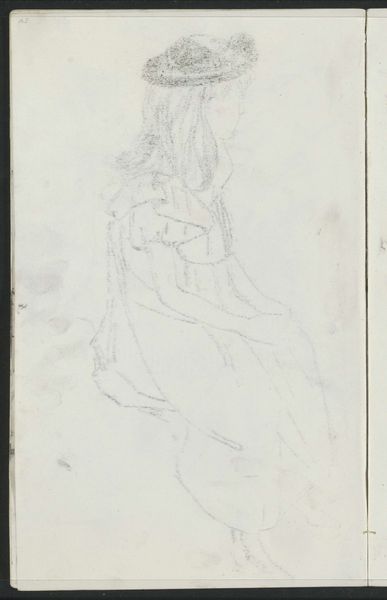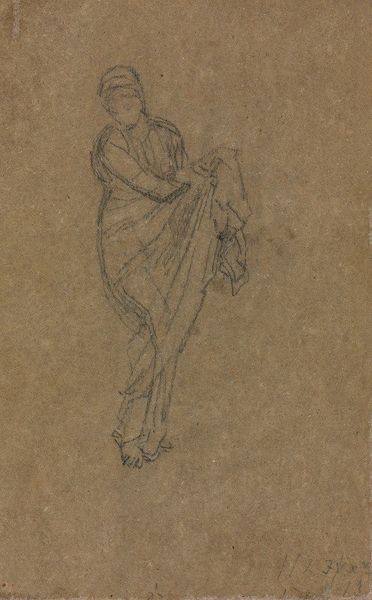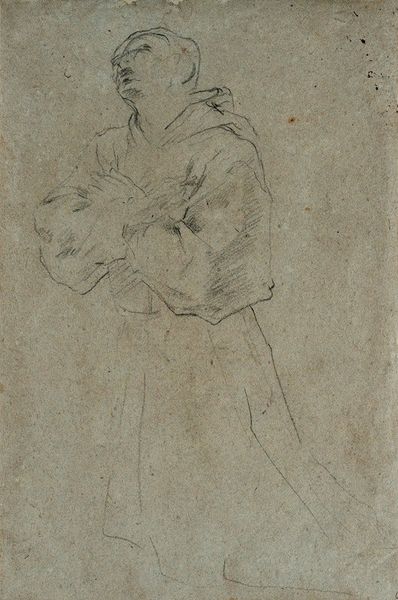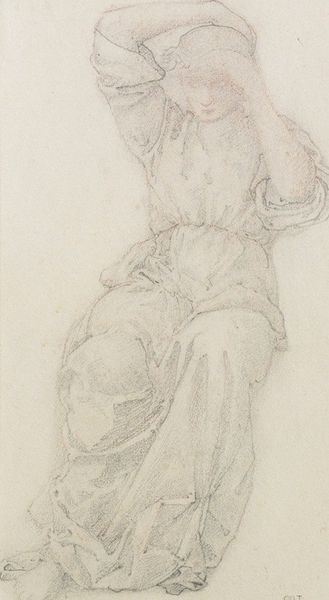
Tennyson’s The Lord of Burleigh – The Death of Lady Burleigh – Sketch of the Nurse and Boy 1855 - 1856
0:00
0:00
drawing, pencil
#
portrait
#
drawing
#
pencil sketch
#
figuration
#
pencil
#
pre-raphaelites
Copyright: Public Domain: Artvee
Curator: At first glance, there's a softness to this sketch. It’s ethereal, almost melancholic. Editor: Indeed. We’re looking at a pencil sketch created by Sir John Everett Millais between 1855 and 1856. It’s entitled "Tennyson’s The Lord of Burleigh – The Death of Lady Burleigh – Sketch of the Nurse and Boy." It represents one stage in the illustration process related to Tennyson's poem, capturing a somber domestic scene. Curator: The way Millais uses such light strokes, it almost feels like a memory fading. Look at the lines, they're suggestive more than definitive, leaving much to our imagination. I feel the Pre-Raphaelite style shining through the delicacy and intimacy portrayed here. Editor: The sketch is particularly compelling when considered in the context of the Victorian era's preoccupation with illness, motherhood, and mortality. Tennyson’s poem explores social class and its inherent tragedies; Millais’s work reflects that by presenting a tender yet clearly sorrowful scene of a nurse and child. Note how art and literature intersect, where social narratives became potent sources for visual representation. Curator: Observe how Millais masterfully uses shading and line weight to give depth to the figures, even in a preliminary sketch. The way the light catches the baby's face, for instance, creates a focal point despite the sketch's incompleteness. Editor: And it begs the question: what societal roles were being assigned to women in that era? As for visual composition, this preparatory drawing is more than just lines on paper. Millais carefully blocks in shapes for the subjects, the sketch’s openness serving as a study on character—not unlike mapping of moral terrain. Curator: It is a poignant meditation on loss, framed in simple elegance of line. The entire composition resonates a tender grief, despite the bare execution. Editor: A powerful look at the artist's process and its intersection with poetic narrative and societal norms of its time. Ultimately it invites reflections of the relationship between the personal and historical in art making.
Comments
No comments
Be the first to comment and join the conversation on the ultimate creative platform.
